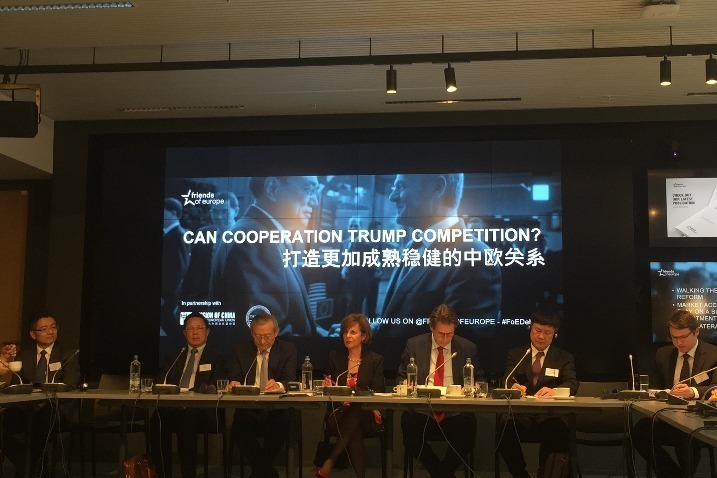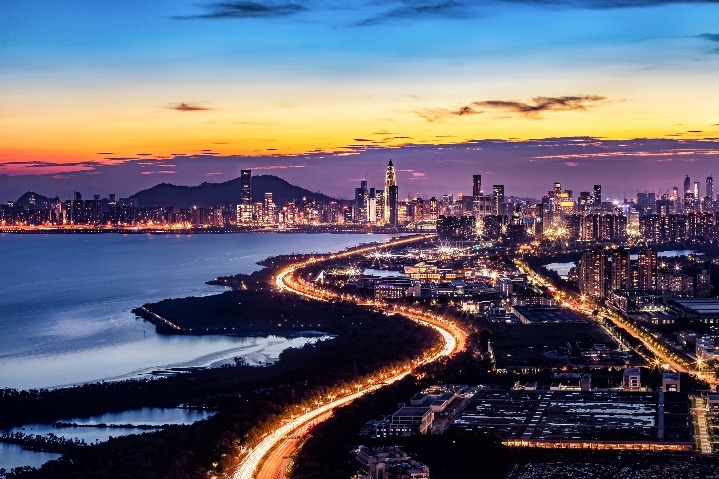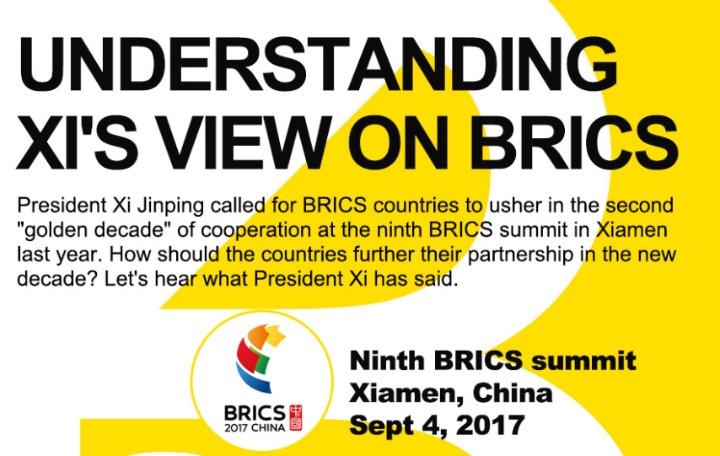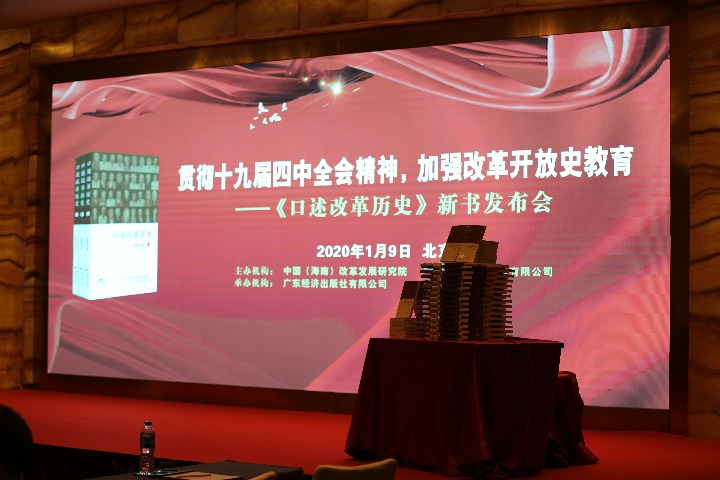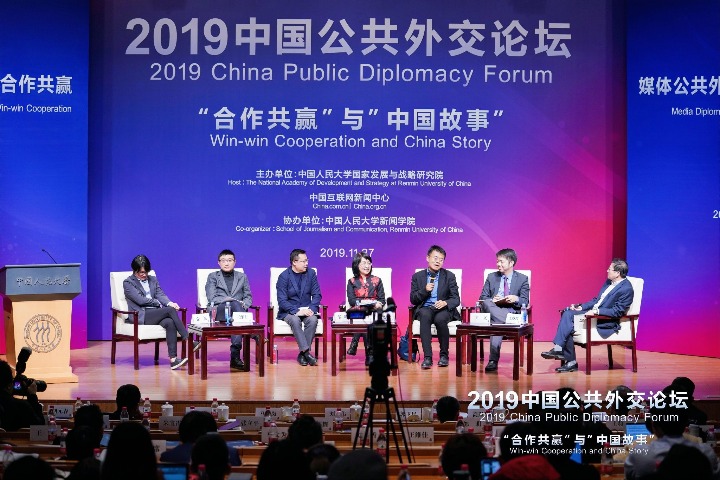China shows direction for new era
By Hans Boller-Wu |
chinawatch.cn |
Updated: 2019-03-06 16:32
Anniversaries, such as the 40th of the “reform and opening-up” policy in China, offer a good opportunity to look back to the existing conditions in China when that policy was formulated; and also, to assess in a more general way the effects that policy has had on China and the world.
To start with the first, China was exhausted at the end of the “cultural revolution” (1966-76), culturally devastated and economically ruined; in short,: a country at its lowest point. As an witness, I encountered in 1976 a deeply wounded society, especially in intellectual circles where almost everybody had a depressing story to tell. Daily life was characterized by rationing and scarcity. These were the features of life in China’s capital, not to speak about the impoverished countryside where by far the largest part of the population lived.
GDP per capita was less than $200 (as against more than $8,000 now), a raw estimate since detailed statistics didn’t exist at the time. It was the result of a policy ofideological rigidity and isolation which came to an end at the Third Plenum of the 11th National Congress of the Communist Party of China in December 1978. In hindsight, this meeting goes down in history as a thorough, unprecedented break and paradigm shift in Chinese politics, and the beginning of a revolutionizing development of virtually all spheres of society led by the then paramount leader Deng Xiaoping.
He emphasized the need to reform agriculture, industry, defense, science and technology while holding firm to the principles of Party leadership and socialist orientation. Even more importantly, he ended the era of class struggle and factionalism which wreaked so much havoc on the country during the decade of the "cultural revolution". Instead he reformulated the principal aim of the Party to resolve the contradiction between the material and cultural needs of the people and the backwardness of the country’s economy.
Under his leadership the country entered “the initial stage of socialism”, as he put it, which was meant to dramatically raise the productivity of labor over decades and bring order and discipline back to the country.
This epochal change contained the recognition that peace and stability were vital and, indeed, indispensable for the development of any society. It is important to note that the new paradigm of reform and opening-up was linked to far-reaching elements of China's foreign policy. The country pledged not to seek hegemony, territorial expansion or military alliances. Rather it committed itself to peace, development and international cooperation.
In a broader context the new policy orientation was perfectly in line with the strong trend in international political relations at the time to end the bloc-mentality and confrontational thinking of the Cold War era following World War II. For China it was all but easy to handle the systemic change. Strong vested interest fiercely opposed any revision of the existing order. Reform had to start in the heads of millions of leading cadres. “Seeking truth from facts”, the core of material dialectics, became the all-important principle, and over the years China turned into a gigantic laboratory. Consequently, reform efforts centered around three important areas: First the restoration of the educational system along with an encompassing rehabilitation of intellectuals. Second a complete overhaul of the economic and financial system. After yearlong discussions and experimenting, the CPC concluded that market forces and private initiative – along with planned elements – had to play a decisive role if the full productive potential of an innovative society like the Chinese was to be tapped. And finally, the setting-up of a new regime of civil governance with a reliable judicial system. The experience of Hong Kong at the southern doorstep showed that rule of law and openness to the world along with a hard-working people and not Western-type democracy – since there was none under British colonial rule – was at the origin of the huge economic success of the Chinese port city.
Most remarkably, all this was reached without a comprehensive blueprint. Instead it was “crossing the river by feeling the stones” as Deng put it, an analogy which echoed a much older insight by the Confucian scholar Wang Yangming who held that “knowledge is the beginning of practice and doing (practice) the completion of knowledge”. After an astonishing three decades, China succeeded in establishing its own type of development model called “socialism with Chinese characteristics” which is amazing the world by its innovative strength and vitality.
So, at the beginning of the new millennium, the key features of the new order were in place and unleashed enormous dynamics. To mention just one astonishing fact: in the course of reform and opening-up, the country succeeded in lifting 700 million people out of poverty. However, the system still lacked sophistication, balance, coordination and sustainability. In addition, in tandem to the growing wealth of the country, corruption grew rampant and became a systemic threat. It was the current CPC leader Xi Jinping who recognized the real dimensions of the problem and responded courageously by again deepening the reforms in several key domestic areas as well as by broadening the scope of opening-up to the outside world.
In an unprecedented move 2013, the Chinese president announced his Belt and Road Initiative. The name evokes the centuries-old trade routes between China and Europe and aims at dramatically increasing the interconnectivity of the Eurasia landmass as well as Africa under new geopolitical conditions. It is a grand design, keen in its architecture, responding to the needs of a perceived new epoch while at the same time correcting the obvious flaws of the economic globalization of the past. In its full dimensions and ramifications, it will finally evolve as the biggest endeavor ever undertaken by mankind.
To have an even deeper understanding of what is meant by “the needs of a new epoch” and to underscore the importance of the Belt and Road Initiative – which is in fact a global project, not just Chinese – , we may consider for a moment some of the developments in other parts of the world.
The European Union, for one, is facing serious problems. With Brexit, the sharp rise of indebtedness following the global financial crisis of 2008 and the advent of strong populist forces in Central and Eastern European countries as well as in Italy, the grand European integration project is facing its biggest, and possibly existential, challenge.
The war-torn Middle East and North Africa have become hotbeds of violence and hatred, not least as a result of foreign military intervention destroying states leading to thousands dead and millions homeless, thereby triggering waves of refugees which further destabilize adjacent regions.
And finally, the US where the president has started to undermine existing rules and institutions not only at home but also in international relations. Under the slogan MAGA (Make America Great Again) he has initiated an aggressive, protectionist agenda, even against old and formerly trusted allies.
Against this geopolitical backdrop, the need for a comprehensive framework inducing peace, stability and development becomes ever more urgent. The agenda which Xi Jinping has proposed for a new era refers not only to domestic politics but to the world as a whole since he pledged that China will take greater responsibility in international relations. At this juncture of world affairs, the shift has to be from confrontation to dialogue, from threats to respect, from zero-sum thinking to win-win situations. Enhanced partnerships instead of alliance should be the guiding principle while new, integrated and multilateral ways have to be found to tackle traditional and non-traditional security problems. And finally, a more daring vision is needed to lead the world to sustainable development. President Xi correctly identified the overwhelming trends of our time as
-toward peace and cooperation
-toward openness and connectivity and
-toward reform and innovation.
It is fair to say that the Belt and Road Initiative is the most comprehensive attempt so far to meet the above formulated goals and challenges on a global scale. It is a strong call by China, now one of the leading nations, which has gained support to date of some 100 countries and international organizations. No doubt, as it further evolves, it has the potential to become the guiding principle and standard-setting network for the perceived new phase of globalization. There is, however, one element which should not be underestimated. The Belt and Road Initiative represents a grand design which requires a collective effort on a global scale. It cannot be achieved overnight or by one party alone. Above all, in needs to win the hearts of the people involved wherever it materializes. Unavoidably, there is envy and even the suspicion that China may intend to dominate the world given the sheer size and impact of the initiative. Therefore, more attention has to be paid to the concrete modalities of the implementation.
Each project has to be carefully scrutinized to see whether it really fulfills the criteria of a win-win situation. These criteria include not only the financial details, but also the sentiments of the people involved as well as the requirements of the ecological conditions to name just two. The projects have to visibly reflect the aspirations of the local people along with their functions in the grand design. Under whatever administration, they must give every reason to be interpreted as beneficial gestures of a trustful partner. This is not self- evident since all participating countries are – with the exception of the US and the EU – much smaller or even tiny in comparison with China.
Fortunately, Chinese traditions provide sources for solutions and models of behavior. For one, the Chinese philosopher Zhao Tingyang draws our attention to the old concept of tianxia (all-under-heaven) of the ancient Zhou Dynasty (1046-256 BC) in which the world (at that time the Chinese orbit)as a whole was regarded as responsible actor. Similarly, Laozi suggested to “look at the world from the perspective of the world”.
Equally interesting is the ancient quotation da bang yixiaxiao bang – a big country should be humble in dealing with a small country. Chapter 61 of Laozi’s Dao De Jingoffers further insight; it is worthwhile being quoted extensively:
“A great country is like a low-lying lake where many rivers converge; a focal point for the earth, the feminine spirit of the world. The female always overcomes the male by stillness, stillness is the lowest position.
Therefore, a big country, by placing itself below a smaller country, will win over (the hearts of) the small country. And a small country, by placing itself below a larger country, will gain the large country. (…) A great country wishes to unite and feed the people, a small country wishes to serve others. (…) Remember, the great country should always be humble”.
Hans Boller is a China-correspondent for the Süddeutsche Zeitung and various Swiss newspapers. He was the Vice-President of Swiss-Chinese Chamber of Commerce and is the founder of ChinaMed and of the Boller-Wu foundation.
This article is selected from a book, The Sleeping Giant Awakes, jointly published by China Daily’s communication-led think tank China Watch and Guangdong People's Publishing House.
The author contributed this article to China Watch exclusively. The views expressed do not necessarily reflect those of China Watch.
All rights reserved. Copying or sharing of any content for other than personal use is prohibited without prior written permission.
Anniversaries, such as the 40th of the “reform and opening-up” policy in China, offer a good opportunity to look back to the existing conditions in China when that policy was formulated; and also, to assess in a more general way the effects that policy has had on China and the world.
To start with the first, China was exhausted at the end of the “cultural revolution” (1966-76), culturally devastated and economically ruined; in short,: a country at its lowest point. As an witness, I encountered in 1976 a deeply wounded society, especially in intellectual circles where almost everybody had a depressing story to tell. Daily life was characterized by rationing and scarcity. These were the features of life in China’s capital, not to speak about the impoverished countryside where by far the largest part of the population lived.
GDP per capita was less than $200 (as against more than $8,000 now), a raw estimate since detailed statistics didn’t exist at the time. It was the result of a policy ofideological rigidity and isolation which came to an end at the Third Plenum of the 11th National Congress of the Communist Party of China in December 1978. In hindsight, this meeting goes down in history as a thorough, unprecedented break and paradigm shift in Chinese politics, and the beginning of a revolutionizing development of virtually all spheres of society led by the then paramount leader Deng Xiaoping.
He emphasized the need to reform agriculture, industry, defense, science and technology while holding firm to the principles of Party leadership and socialist orientation. Even more importantly, he ended the era of class struggle and factionalism which wreaked so much havoc on the country during the decade of the "cultural revolution". Instead he reformulated the principal aim of the Party to resolve the contradiction between the material and cultural needs of the people and the backwardness of the country’s economy.
Under his leadership the country entered “the initial stage of socialism”, as he put it, which was meant to dramatically raise the productivity of labor over decades and bring order and discipline back to the country.
This epochal change contained the recognition that peace and stability were vital and, indeed, indispensable for the development of any society. It is important to note that the new paradigm of reform and opening-up was linked to far-reaching elements of China's foreign policy. The country pledged not to seek hegemony, territorial expansion or military alliances. Rather it committed itself to peace, development and international cooperation.
In a broader context the new policy orientation was perfectly in line with the strong trend in international political relations at the time to end the bloc-mentality and confrontational thinking of the Cold War era following World War II. For China it was all but easy to handle the systemic change. Strong vested interest fiercely opposed any revision of the existing order. Reform had to start in the heads of millions of leading cadres. “Seeking truth from facts”, the core of material dialectics, became the all-important principle, and over the years China turned into a gigantic laboratory. Consequently, reform efforts centered around three important areas: First the restoration of the educational system along with an encompassing rehabilitation of intellectuals. Second a complete overhaul of the economic and financial system. After yearlong discussions and experimenting, the CPC concluded that market forces and private initiative – along with planned elements – had to play a decisive role if the full productive potential of an innovative society like the Chinese was to be tapped. And finally, the setting-up of a new regime of civil governance with a reliable judicial system. The experience of Hong Kong at the southern doorstep showed that rule of law and openness to the world along with a hard-working people and not Western-type democracy – since there was none under British colonial rule – was at the origin of the huge economic success of the Chinese port city.
Most remarkably, all this was reached without a comprehensive blueprint. Instead it was “crossing the river by feeling the stones” as Deng put it, an analogy which echoed a much older insight by the Confucian scholar Wang Yangming who held that “knowledge is the beginning of practice and doing (practice) the completion of knowledge”. After an astonishing three decades, China succeeded in establishing its own type of development model called “socialism with Chinese characteristics” which is amazing the world by its innovative strength and vitality.
So, at the beginning of the new millennium, the key features of the new order were in place and unleashed enormous dynamics. To mention just one astonishing fact: in the course of reform and opening-up, the country succeeded in lifting 700 million people out of poverty. However, the system still lacked sophistication, balance, coordination and sustainability. In addition, in tandem to the growing wealth of the country, corruption grew rampant and became a systemic threat. It was the current CPC leader Xi Jinping who recognized the real dimensions of the problem and responded courageously by again deepening the reforms in several key domestic areas as well as by broadening the scope of opening-up to the outside world.
In an unprecedented move 2013, the Chinese president announced his Belt and Road Initiative. The name evokes the centuries-old trade routes between China and Europe and aims at dramatically increasing the interconnectivity of the Eurasia landmass as well as Africa under new geopolitical conditions. It is a grand design, keen in its architecture, responding to the needs of a perceived new epoch while at the same time correcting the obvious flaws of the economic globalization of the past. In its full dimensions and ramifications, it will finally evolve as the biggest endeavor ever undertaken by mankind.
To have an even deeper understanding of what is meant by “the needs of a new epoch” and to underscore the importance of the Belt and Road Initiative – which is in fact a global project, not just Chinese – , we may consider for a moment some of the developments in other parts of the world.
The European Union, for one, is facing serious problems. With Brexit, the sharp rise of indebtedness following the global financial crisis of 2008 and the advent of strong populist forces in Central and Eastern European countries as well as in Italy, the grand European integration project is facing its biggest, and possibly existential, challenge.
The war-torn Middle East and North Africa have become hotbeds of violence and hatred, not least as a result of foreign military intervention destroying states leading to thousands dead and millions homeless, thereby triggering waves of refugees which further destabilize adjacent regions.
And finally, the US where the president has started to undermine existing rules and institutions not only at home but also in international relations. Under the slogan MAGA (Make America Great Again) he has initiated an aggressive, protectionist agenda, even against old and formerly trusted allies.
Against this geopolitical backdrop, the need for a comprehensive framework inducing peace, stability and development becomes ever more urgent. The agenda which Xi Jinping has proposed for a new era refers not only to domestic politics but to the world as a whole since he pledged that China will take greater responsibility in international relations. At this juncture of world affairs, the shift has to be from confrontation to dialogue, from threats to respect, from zero-sum thinking to win-win situations. Enhanced partnerships instead of alliance should be the guiding principle while new, integrated and multilateral ways have to be found to tackle traditional and non-traditional security problems. And finally, a more daring vision is needed to lead the world to sustainable development. President Xi correctly identified the overwhelming trends of our time as
-toward peace and cooperation
-toward openness and connectivity and
-toward reform and innovation.
It is fair to say that the Belt and Road Initiative is the most comprehensive attempt so far to meet the above formulated goals and challenges on a global scale. It is a strong call by China, now one of the leading nations, which has gained support to date of some 100 countries and international organizations. No doubt, as it further evolves, it has the potential to become the guiding principle and standard-setting network for the perceived new phase of globalization. There is, however, one element which should not be underestimated. The Belt and Road Initiative represents a grand design which requires a collective effort on a global scale. It cannot be achieved overnight or by one party alone. Above all, in needs to win the hearts of the people involved wherever it materializes. Unavoidably, there is envy and even the suspicion that China may intend to dominate the world given the sheer size and impact of the initiative. Therefore, more attention has to be paid to the concrete modalities of the implementation.
Each project has to be carefully scrutinized to see whether it really fulfills the criteria of a win-win situation. These criteria include not only the financial details, but also the sentiments of the people involved as well as the requirements of the ecological conditions to name just two. The projects have to visibly reflect the aspirations of the local people along with their functions in the grand design. Under whatever administration, they must give every reason to be interpreted as beneficial gestures of a trustful partner. This is not self- evident since all participating countries are – with the exception of the US and the EU – much smaller or even tiny in comparison with China.
Fortunately, Chinese traditions provide sources for solutions and models of behavior. For one, the Chinese philosopher Zhao Tingyang draws our attention to the old concept of tianxia (all-under-heaven) of the ancient Zhou Dynasty (1046-256 BC) in which the world (at that time the Chinese orbit)as a whole was regarded as responsible actor. Similarly, Laozi suggested to “look at the world from the perspective of the world”.
Equally interesting is the ancient quotation da bang yixiaxiao bang – a big country should be humble in dealing with a small country. Chapter 61 of Laozi’s Dao De Jingoffers further insight; it is worthwhile being quoted extensively:
“A great country is like a low-lying lake where many rivers converge; a focal point for the earth, the feminine spirit of the world. The female always overcomes the male by stillness, stillness is the lowest position.
Therefore, a big country, by placing itself below a smaller country, will win over (the hearts of) the small country. And a small country, by placing itself below a larger country, will gain the large country. (…) A great country wishes to unite and feed the people, a small country wishes to serve others. (…) Remember, the great country should always be humble”.
Hans Boller is a China-correspondent for the Süddeutsche Zeitung and various Swiss newspapers. He was the Vice-President of Swiss-Chinese Chamber of Commerce and is the founder of ChinaMed and of the Boller-Wu foundation.
This article is selected from a book, The Sleeping Giant Awakes, jointly published by China Daily’s communication-led think tank China Watch and Guangdong People's Publishing House.
The author contributed this article to China Watch exclusively. The views expressed do not necessarily reflect those of China Watch.
All rights reserved. Copying or sharing of any content for other than personal use is prohibited without prior written permission.





